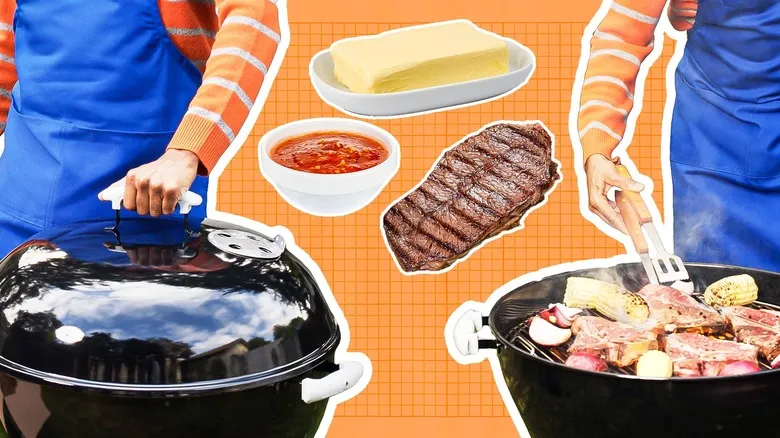Check your tools
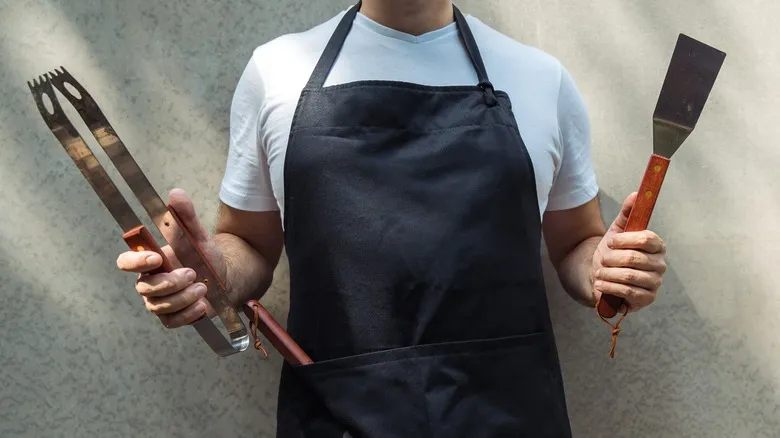
Inspecting your grill and other tools before your first planned use is the best way to ensure a successful grilling session by confirming that everything is functioning properly. The last thing you want is to discover a part needs replacing on the day of your cookout.
"Make sure to set up your grill or smoker ahead of your first cook and ignite it," recommend John McLemore and John McLemore Jr., the father-son team behind the popular cookbook, "Gather & Grill." "Check that everything is operational. Don’t wait until your first cookout to find out you might need something for your grill."
Take this opportunity to gather your grilling tools as well, such as tongs for flipping your meat and foil to safeguard more delicate items. If you enjoy plank grilling, consider stocking up on your favorite wood planks at the beginning of the season so you’re always prepared.
Clean and season your grill
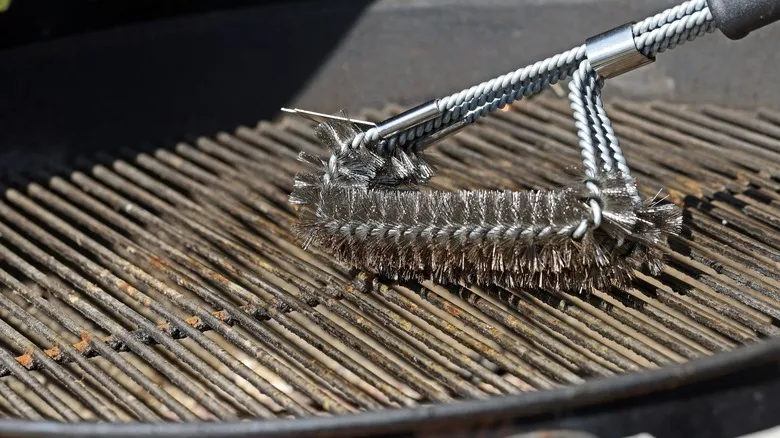
Clean your grill as necessary to eliminate cooking residue and any accumulated grime, but avoid excessive cleaning, as advised by John McLemore and John McLemore Jr. A grill brush is an effective tool for scrubbing away leftover food, but don’t underestimate the power of heat from the grill itself. "Remove any significant gunk, rust spots, or dirty areas," they recommended. "Use a vinegar and water solution, then apply olive oil spray, and fire up your grill to burn off any unwanted residue. Don’t hesitate to perform this burn-off after cooking or at least every other time you grill."
Once your grill is clean, Yumna Jawad, founder, recipe developer, and cookbook author at Feel Good Foodie, suggests seasoning it with oil before use. "Utilize tongs and a folded paper towel soaked in vegetable oil to lightly coat the grates, which helps prevent food from sticking," she explained. "Be careful not to apply too much oil, as it can lead to flare-ups."
In the end, the best practices for maintaining your grill are similar to those you apply to other kitchen tools. "Treat your grill like a cast iron skillet, and it will have a much longer lifespan," the McLemores advised.
Keep the lid closed
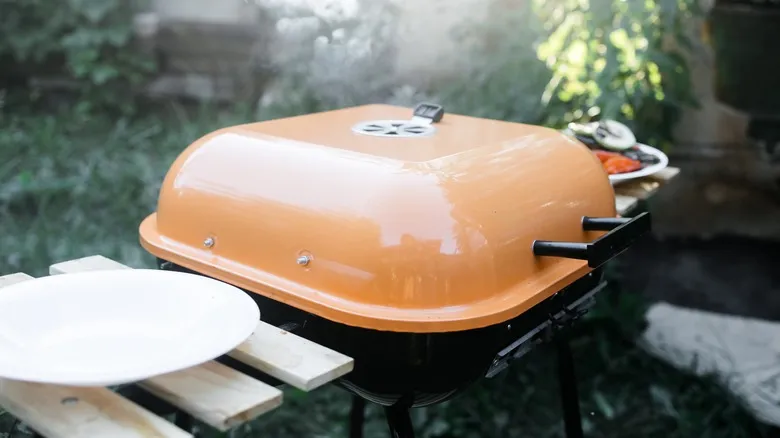
Whether you're grilling or smoking, maintaining heat is essential. "Don't shy away from a little flame," advise John McLemore and John McLemore Jr. "Make sure your grill is clean and let it do its thing. Controlled flames are beneficial, but grease fires are not." Yumna Jawad also notes that this technique enhances the flavor of your food. "Keeping the lid closed while grilling helps trap heat and smoke, which adds flavor and ensures more even cooking," she explained. "Only lift the lid when you need to flip or reposition your food."
When smoking meat, adjust your settings as necessary to achieve the desired level of smoke. According to the McLemores, heavy smoke isn't always ideal. "Thin blue smoke at low and slow temperatures is the way to go," they recommend. Standard grills and dedicated smokers typically allow you to fine-tune smoke output, add wood chips for extra flavor, and monitor the meat's progress.
Try potent spices
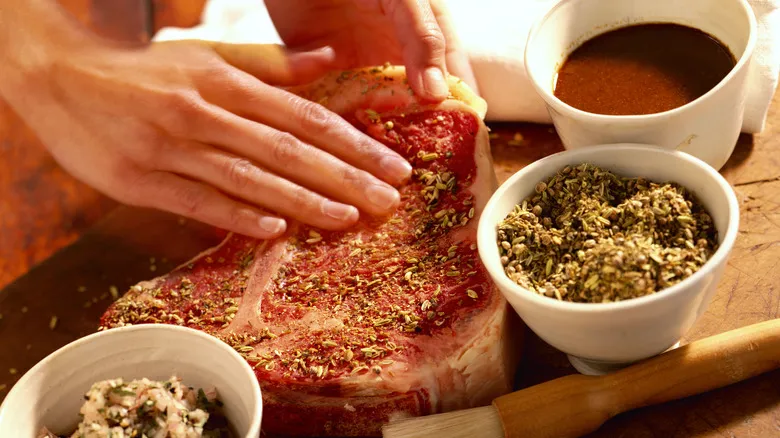
Grilling gives you the freedom to be generous with spices, as bold flavors can stand out on the grill. Chef Lior Lev Sercarz, a spice expert and owner of La Boîte, a global spice brand, suggests using pimentón for a deeper smoky taste, along with cumin and cinnamon. You can also experiment with the texture of spices by varying the grind. "Incorporate coarse spices or spice blends for seasoning," Sercarz advised. "Textured spices can form a delightful, flavorful crust on fish or meat while grilling."
However, Sercarz cautions against using delicate spices, as they often can't withstand the high heat of the grill. "Orange blossom flowers will scorch from the intense heat," he noted. "Other spices to steer clear of include dried herbs (unless they're part of a marinade), flowers in general, and fennel pollen, which should be added after grilling." Understanding when to introduce specific ingredients can be the key to achieving a perfectly cooked exterior crust rather than one that's burnt.
Season before grilling
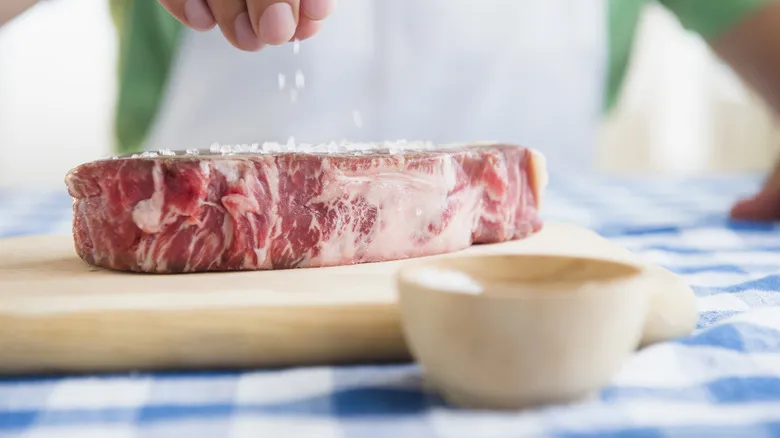
The longer you allow spices to rest on your meat, fish, or vegetables, the more pronounced the flavors will become. Dry rubs and marinades are effective because they enable the spices to infuse into the food. "Apply rubs or marinades to season your meat (and even vegetables!) in advance," advises Chef Lior Lev Sercarz. "This gives the marinade's flavors time to seep into your ingredients for a more profound seasoning."
This step is also crucial for maintaining flavor while cooking on the grill. Sercarz explains that pre-adding spices allows them to "hydrate," which helps prevent burning when they hit the grill. "Marinate your meats and vegetables up to three days before cooking," he recommends.
Michael Saperstein, a James Beard "Rising Star" nominee and co-owner of Sunshine Provisions, a top-tier meat supplier in Florida, suggests a straightforward salt and pepper mix for steak. Alternatively, you can add a touch of garlic powder to create a flavorful burger rub. For a delicious chicken marinade, Saperstein combines salt, pepper, garlic powder, dried rosemary, and dried Greek oregano with extra virgin olive oil and Dijon mustard.
Add fat to your spices
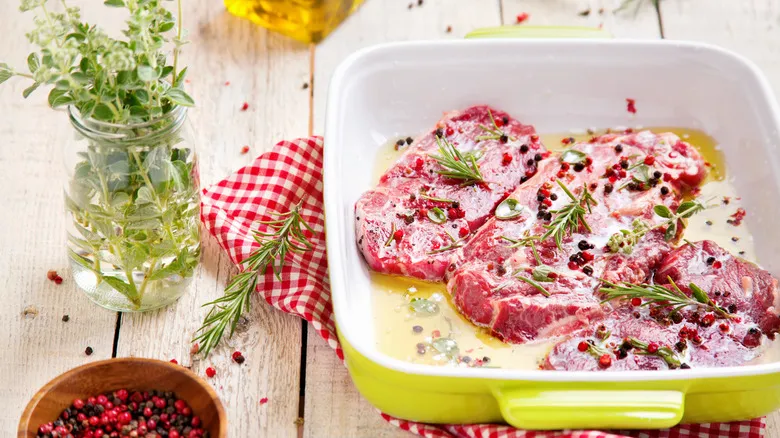
To achieve the best results with rubs, marinades, and sauces while grilling, it's essential to apply them correctly. You'll need some type of oil or fat to ensure that the seasonings stick to the food and remain throughout the cooking process. Without this, dry spices can fall into the grill grates, failing to enhance the flavor. They may also create a mess and risk burning, leading to unwanted or excessive smoke. "Use oil to help spices adhere to your ingredients," advises Chef Lior Lev Sercarz. "Otherwise, the spices will just fall off."
You can also baste your food during cooking, but be mindful of timing if your mixture contains sugar. "If you're adding sauce or extra marinade to the meat, don't do it too early, as the sugars can burn," warns Yumna Jawad. "If your sauce has sugar, wait until closer to the end of the cooking process."
Allow your meat come to room temperature

To achieve evenly cooked food with a good sear, avoid placing meat directly on the grill straight from the fridge. Allowing it to reach room temperature beforehand will help ensure it turns out as you intended. Chef Lior Lev Sercarz explains, "Cold meat taken directly from the refrigerator will cause the grill to cool down instantly, resulting in less effective cooking. This can also lead to uneven results, where the exterior may become charred while the interior remains undercooked. Starting with meat that is closer to room temperature promotes even cooking throughout."
Michael Saperstein adds that grilling cold meat can affect both the appearance and flavor of the final dish. "When very cold meat hits a hot grill, the steak can seize up and sometimes curl at the edges," he notes. "By allowing it to reach room temperature, the steak will cook more quickly and remain much more tender."
Get the grill hot
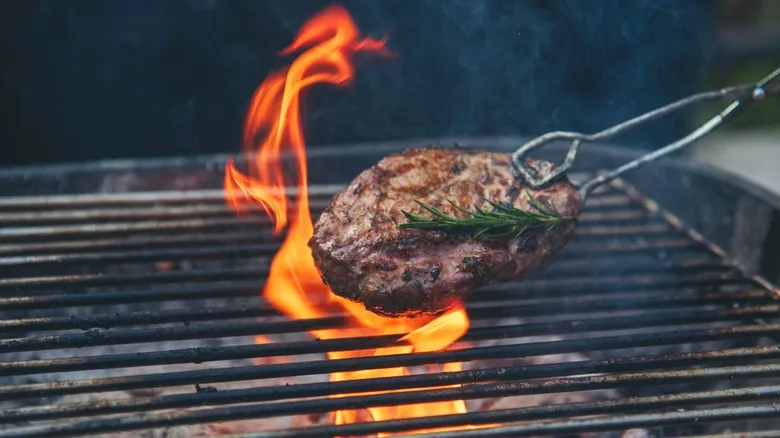
One of the best pieces of advice for achieving the ideal char is to ensure your grill is thoroughly heated, regardless of the type you’re using. "Whether you’re using charcoal, gas, or electric, turn up the heat and allow the grill to reach a high temperature for that perfect sear," advises Chef Lior Lev Sercarz. "You can always reduce the heat while cooking or move your meats to the side, but starting at a lower temperature means the grill won’t be hot enough."
Allow your grill to preheat before placing any food on it, as adding meat, vegetables, or other items will alter the grill's temperature. Maintaining a high heat from the start will help avoid any significant cooling that could affect the food's flavor. "Get that grill hot!" emphasizes Michael Saperstein. "It should reach at least 500 degrees Fahrenheit before you add your meat. This guarantees a great sear and locks in the flavor."
Go for ingredient quality over quantity

Discover premium steaks and spices that fit your budget. If you have high-quality meat, a straightforward seasoning of salt and pepper may be all you require. Look for quality labels like USDA Prime and USDA Choice, which signify excellent marbling and tenderness. While these cuts tend to be pricier, you can save by not needing additional spices to enhance the flavor.
Chef Lior Lev Sercarz emphasizes that you don’t need many specialty ingredients to create a delicious meal and encourages you to explore various options for the best choices. "For a well-seasoned steak, it's essential to achieve the best flavor reminiscent of a top steakhouse," he explains. "This necessitates high-quality ingredients. Avoid skimping or buying in bulk on cheaper products... quality outweighs quantity."
Steam your buns
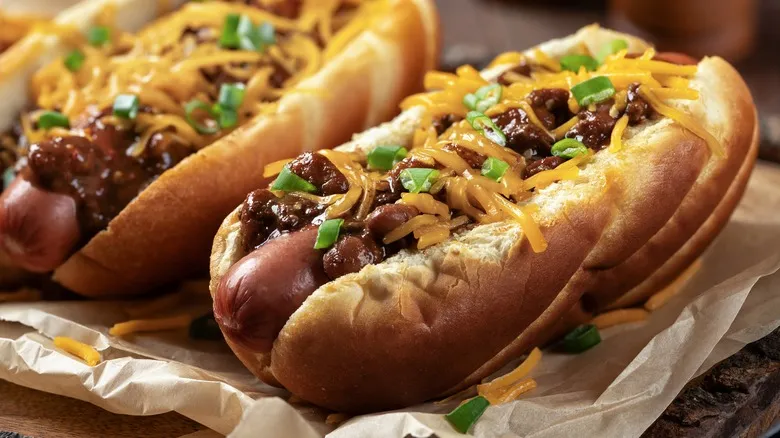
Grilling tips extend beyond just main courses or meats. Preparing bread and buns on the grill is an excellent way to enhance every ingredient, ensuring they all complement each other on your plate. Place your burger buns, rolls, and hot dog buns on the grill to achieve a toasted and crispy exterior. Just be cautious not to overcook the bread, as it typically requires less time than meat and vegetables.
John McLemore and John McLemore Jr. suggest preparing your buns while grilling. "Cook your hot dogs (or your preferred meat), then take your buns out, place the meat in the hot dog bun, and return each to the plastic bag," they advise. "Twist and seal the bag to let the buns steam and soften before serving." This method results in a wonderfully soft bun for hot dogs or burgers. In fact, steamed hot dog buns are a key component in various specialty and regional hot dog styles, including classic ballpark hot dogs and Chicago-style dogs.
Use butter for flavor

Enhancing the flavor of your bread is crucial when grilling. Grilling buns or bread with the buttered side facing down is an excellent method to infuse extra taste into your meal.
"Butter and toast your hamburger or white subs, then grill them directly over heat with the butter side down for the ultimate toasted bun," suggest John McLemore and John McLemore Jr. "For dinner rolls (or your preferred bread), place them on the warming rack and brush or spray with butter for 30 to 90 seconds to gently warm your buns." The goal is not to cook the bread and buns but to allow the outside to remain on the grill just long enough to achieve a crispy, flavorful crust.
You can also experiment with oil to create a different flavor profile. Using compound butter infused with herbs or cheese is a fantastic addition, both for grilling bread and as a topping for a finished steak.
Let meat rest

A perfectly grilled steak will lose its moisture and flavor if you cut into it too soon. Allow it to rest for a few minutes after grilling to ensure that the juices are reabsorbed into the meat. "Give the steak a chance to rest for 10-20 minutes (depending on its size) before digging in," advises Chef Lior Lev Sercarz. "The longer it cooks, the longer it should rest, allowing the juices to settle and not escape with the first cuts."
Michael Saperstein suggests a shorter resting period but prefers using a meat thermometer to check for doneness instead of cutting into the steak. "Once the steak reaches the desired temperature (use a digital probe thermometer), let it rest on the cutting board for two minutes before slicing," he recommends. This way, you can avoid losing juices immediately and minimize the mess to clean up.
Reverse sear for a crowd
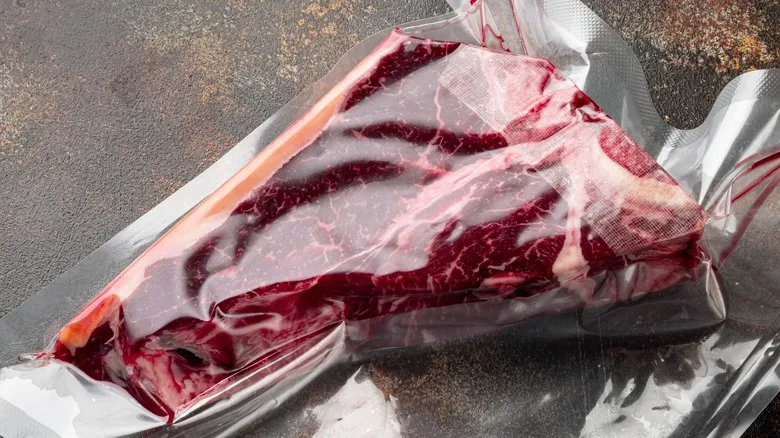
When preparing for a large gathering, Michael Saperstein recommends using the reverse sear or sous vide techniques to cook the insides of steaks in advance. This approach minimizes the time and focus required for grilling, allowing the chef to socialize with guests and truly enjoy the occasion.
"There’s nothing more stressful than managing a full grill of steaks and trying to cook them all to perfection for a big event," he explains. "I recommend using the reverse sear or sous vide methods beforehand. This way, the steaks are already cooked to rare or medium rare, and you only need to quickly sear the outside on a hot grill, ensuring they’re perfectly done without any stress." The reverse sear method, which involves cooking the steak in the oven before searing, is a well-kept steakhouse secret that helps busy kitchens meet the high demand for steaks.
Set up two temperature zones

For optimal control, adjust your grill's settings to create two zones with varying heat levels. This allows you to transition food from intense searing to low-temperature cooking for the final touches. Ashley Lonsdale, chef-in-residence at ButcherBox, considers dual-zone grilling one of her essential techniques. She utilizes each zone at different stages of the grilling process. "This method is excellent for managing cooking speed, particularly for items that have varying cooking times and heat requirements," she explains. "I heat one zone to a high searing temperature while keeping the other cooler, which is ideal for slowly finishing proteins, like a perfectly charred steak that’s already developed a nice crust."
Yumna Jawad also emphasizes the importance of understanding the different types of heat available on your grill. "Direct heat is positioned directly over the flame, making it perfect for quick-cooking items like burgers and vegetables. Indirect heat, located to the side of the heat source, is ideal for slower-cooking cuts such as roasts," she notes. "A crucial aspect of mastering barbecue is knowing where to locate specific heat zones on your grill."
Resist the urge to flip

When searing, it's essential to allow your food enough time to form a perfect crust on the outside. This occurs because of the Maillard reaction, which takes place when meat is subjected to high temperatures, altering the chemical structure of the proteins. The result is enhanced flavor, a crispy texture, and that delightful sizzling sound that steak lovers cherish. However, even the finest seasoning won't rescue your meat if you keep shifting it around on the grill. Instead, place it on a scorching hot grill surface and let it cook undisturbed for a few minutes. Flipping too soon or too frequently can disrupt this process and cause the food to stick to the grill.
"Flipping once or twice is generally sufficient for even cooking," explains Yumna Jawad. "If you attempt to lift the meat before it's ready, it will adhere to the grates. Allow the meat to form a crust before trying to move it." This method also allows the meat to achieve those coveted grill marks, which are a key area for developing intense flavor.
Recommended

Ree Drummond's Favorite Cookbooks Not Including Her Own
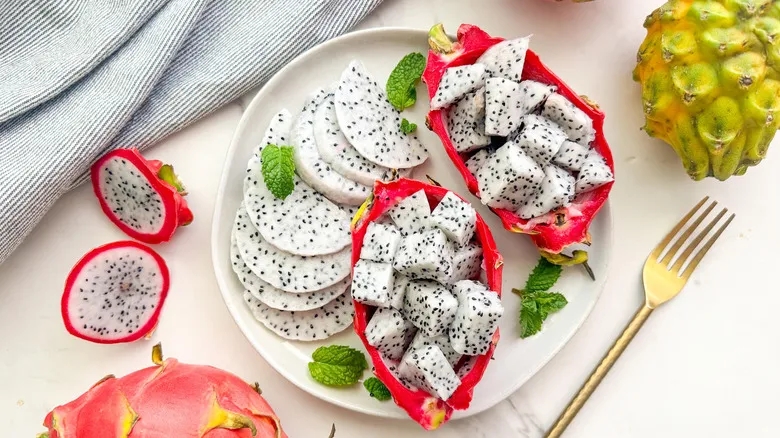
How To Best Cut And Prepare A Dragon Fruit

The Best Way To Freeze A Costco Rotisserie Chicken
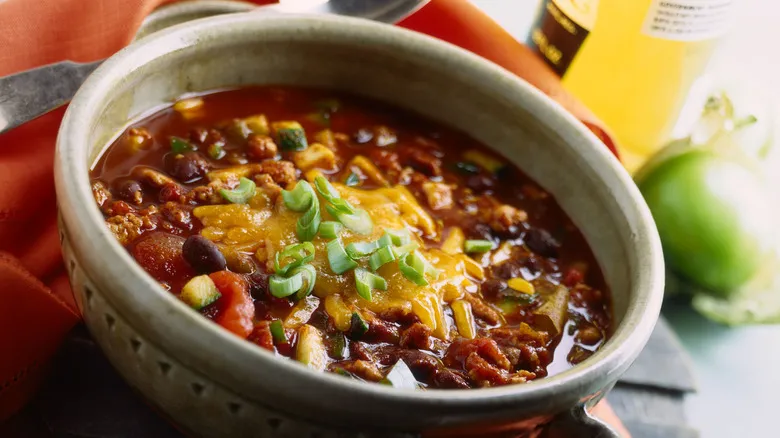
The Unconventional Chili Ingredient You'll Start Craving Constantly
Next up

